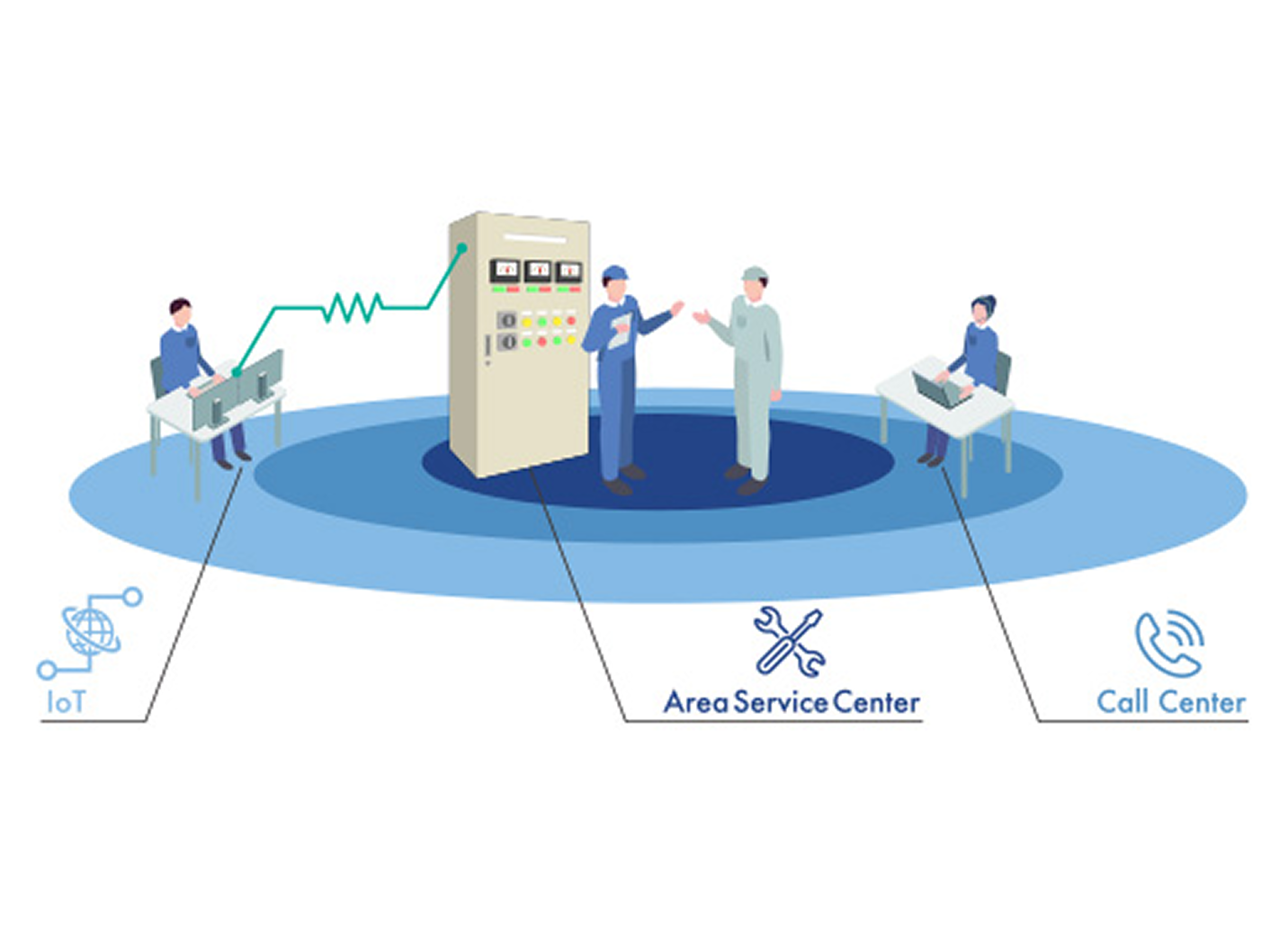We are very pleased that we often hear from our customers that one of Muratec’s major strengths is its impressive capacity for customization in the fields of textile machinery, logistics systems, and machine tools. The foundation of Muratec product development is the voice of our customers. In the development of products specifically designed to provide solutions to problems encountered by individual customers, Muratec has always strived to deliver innovations that address issues in the markets and society we serve. We continue to mark turning points through innovation.
Development ideas that occurred at the textile plant
In the development and commercialization of the Mach Splicer (1979), an innovative product that significantly upgraded the capabilities of automated winders, Muratec had the opportunity to conduct testing at domestic textile plants, where we had developed long-term relationships with the customers. This enabled us to more quickly verify product quality by giving us direct access to the voices of customers. An issue discovered from this partnership was bobbin supply from the fine spinning machine to the winder, which had an impact on the productivity.
In the 1980s, a large amount of bobbins from spinning machines were carried by carts; however, this not only required manpower, but also undermined quality with damage such as yarn being worn out or edges melting in the cart. To solve these problems, we engaged in repeated trial and error to achieve high-performance automation and energy savings in bobbin transfer from the spinning machine to the winder. This resulted in a unique bobbin tray system in which the bobbins are placed on a tray and directly transferred to the winder (1982). Carrying our achievements further, we worked with our customers to jointly developed link corners (1983) which directly connect to the spinning machine, and expanded the range of variations for automated transfer that could be tailored to the production methods of individual customers. Today as well, this range of variations in the transfer methods is highly regarded as a strength of the Muratec Automatic Winder.
During the process of expanding the market for the VORTEX spinning machine (1997), which was developed as an improvement over the initial Murata Jet Spinner (MJS, 1981) and made it possible to handle the slubbing process before the spinning and winding processes, Muratec strived to develop the market working with customers and utilizing the characteristics of yarns, expanded the VORTEX brand by bringing it to manufacturers throughout the textile industry, including spinning, weaving, and apparel.
Addressing logistics issues that change over times
The origin of L&A Division was the tool cabinet introduced in 1962. The fact that this tool cabinet could be customized to meet individual customer needs shows that product development was the result of strong partnerships between the Muratec Logistics & Factory Automation Systems business and customers throughout the industry.
As Muratec developed proposals for advanced logistics systems comprising storage, transfer, and separation equipment as well as software to a wide range of industries, customer needs for automation continued to expand in response to social, economic, and environmental changes over time. To address needs as varied as those encountered by libraries and airports, in home delivery, mail order and e-commerce, and in the handling of hazardous substances, frozen foods, medical and pharmaceutical products, beverages, and liquid crystals, as well as seismic isolation and vibration control to protect against large earthquakes, Muratec continued pursuing innovative ideas that surged beyond the capabilities of conventional systems to develop revolutionary new products.
From 2000, Muratec responded to the increasing need for automation and energy saving at logistics sites facing manpower shortages due to declining birthrate and aging society by continuously developing innovative logistics equipment. For picking in particular, which entails a number of complex processes, the Uni-SHUTTLE HP, SHUTTLINER, ALPHBOT were launched as Goods-To-Person picking systems that enable equipment to find and bring targeted products (Goods) to specific locations (Person).
Transfer systems that support quality and efficiency at ever-evolving semiconductor manufacturing sites
Along the transition of silicon wafers used for semiconductor materials to 300mm size in the 1990s, the standardization of semiconductor manufacturing equipment advanced, and the need for automatic transport of the heavy 300mm wafer containers (FOUPs) between processes arose. This customer trend resulted in the development of the Overhead Hoist Transport (OHT), which became the industry standard. Muratec's ability to respond to this and other needs with cutting-edge equipment led to trust throughout the market.
In 2009, Muratec integrated Asyst Technologies Japan, Inc., which commanded a high market share, and established a system that responded to a wide range of automation needs through the integration of development capabilities, capabilities that represent the driving force behind the current global demand for new semiconductor factory expansion. In recent years, with Full Fab AUTONATION as the keyword, we aim to propose automation for the entire semiconductor factory that surpasses conventional transport systems.
Turnkey System and Process Innovation considering pre- and post-component processing
Muratec installed mass-production lines using small machining centers developed by request from an automobile manufacturer in 1985. Muratec also developed the MW series of twin spindle turning machines in 1986. Accurately anticipating the needs of the automobile industry, Muratec began expanding the series. Among peripheral equipment for twin spindle turning machines in particular, development of the gantry loader to handle work transport was highly successful, and it was adopted by many customers in the automobile industry in Japan and overseas as a turnkey system that operates mass production lines as a single unit.
In regard to turret punch presses used for sheet metal processing, Muratec implemented “process innovation” separate from machine sales while advancing the development of machines by incorporating processes such as punching, molding, and tapping. In addition, Muratec advanced development of automation systems for material loading, transport to subsequent processes, and sorting. Such automation systems were also implemented into its plants, and continual improvement at its manufacturing sites helped to expand the range of options for customers.



